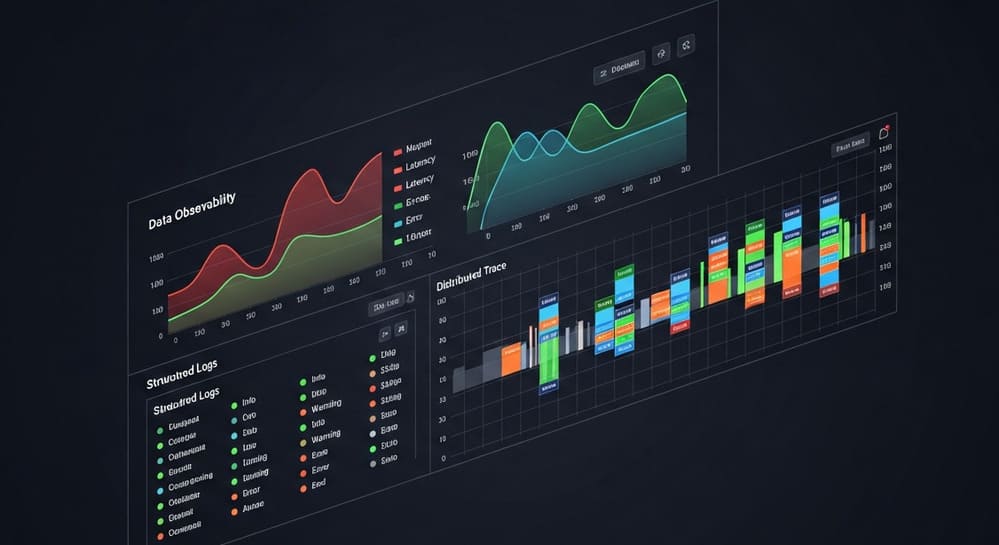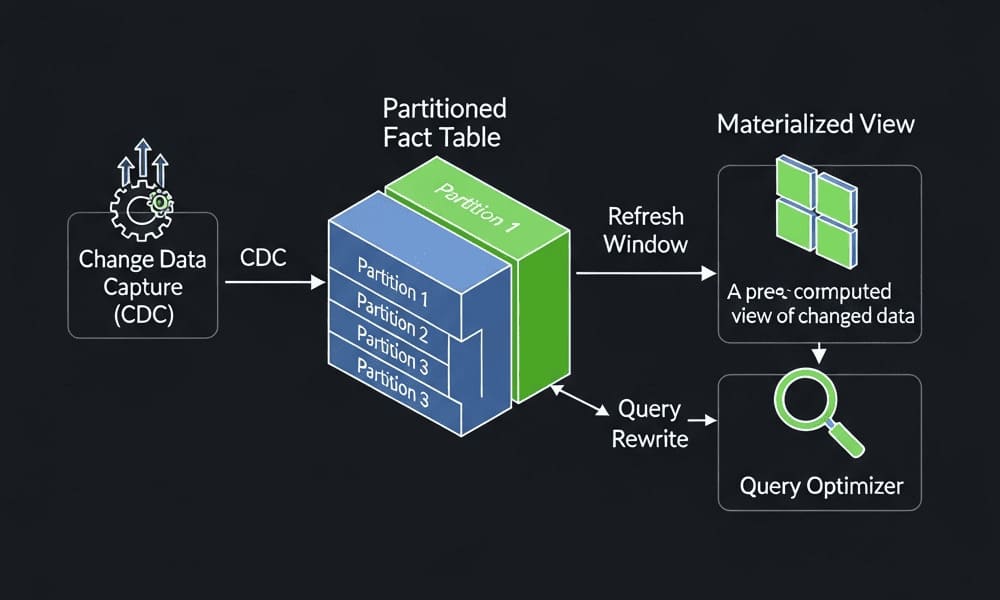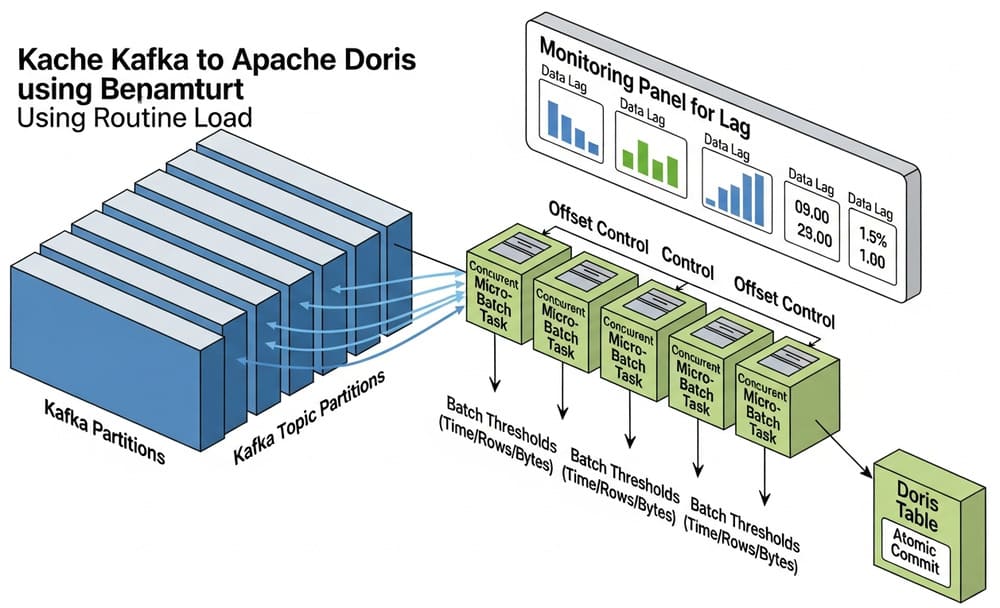Apache Hadoop in 2026: What It’s Great At, What It Isn’t, and How to Use It Well
Meta description (155–160 chars):
Practical guide to Apache Hadoop—HDFS, YARN, MapReduce, Hive, and HBase. Learn architecture, when to use it, code snippets, best practices, and pitfalls.
Introduction — Why Hadoop Still Matters
You’ve got terabytes (or petabytes) of logs, cheap commodity servers, and a mandate to keep storage costs low. Cloud object stores are great—but compliance, data gravity, or budget says “run it on our own metal.”
That’s where Apache Hadoop still earns its keep: durable, linearly scalable storage (HDFS) plus a batch compute substrate (YARN/MapReduce) and a mature ecosystem (Hive, HBase, Oozie, Ranger).
It’s not the shiny new toy. But for cost-efficient cold data, archival analytics, and on-prem big data with predictable throughput, Hadoop remains a solid bet.
Core Concepts & Architecture
The Big Three
- HDFS (Storage): Append-friendly, distributed filesystem. Data is chunked into blocks (e.g., 128 MB) and replicated across DataNodes for fault tolerance.
- YARN (Resource Manager): Schedules cluster resources (CPU/memory) for jobs.
- MapReduce (Compute Model): Batch processing via map → shuffle → reduce. Durable and simple, but latency is minutes—not milliseconds.
Key Supporting Projects
- Hive: SQL layer on Hadoop. Compiles queries to MapReduce/Tez/Spark.
- HBase: Column-family NoSQL on HDFS for low-latency random reads/writes.
- Oozie/Airflow: Workflow orchestration.
- Ranger/Sentry: Security & authorization.
- Kafka + Hadoop: Common pairing for ingestion and long-term storage.
High-Level Data Flow (Typical)
- Ingest: Kafka/Flume/sftp → HDFS landing zone.
- Bronze/Silver/Gold zones on HDFS with schema control.
- Transform: Hive/MapReduce/Spark jobs on YARN.
- Serve: Hive tables for BI; HBase for point reads; exports to marts.
When to Choose Hadoop (and When Not To)
Great fit
- Petabyte-scale cold or warm data where $ per TB dominates.
- On-prem mandates, strict data sovereignty, or limited egress budgets.
- Batch ETL with predictable SLAs (hourly/nightly).
- Write-once, read-many workloads (logs, archives, clickstream).
Poor fit
- Sub-second analytics or interactive ad-hoc exploration.
- Highly elastic, spiky workloads better served by serverless/cloud.
- Teams without ops capacity—Hadoop needs cluster expertise.
Hadoop vs. Alternatives (Quick Comparison)
| Capability | Hadoop (HDFS + YARN) | Cloud Object + Serverless (e.g., S3 + Athena) | Modern Lakehouse (Delta/Iceberg) |
|---|---|---|---|
| Cost/TB (large, on-prem) | Low once amortized | Medium (storage cheap, queries pay per scan) | Medium |
| Latency | Minutes (batch) | Seconds–minutes | Seconds–minutes |
| Elasticity | Fixed cluster | High | High |
| Governance on-prem | Strong | Varies | Strong |
| Ops overhead | High | Low | Medium |
| Streaming + batch | Possible, old-school | Good | Good |
Real Example: Minimal End-to-End on Hadoop
1) Load Data to HDFS
# Create directory and put a CSV file into HDFS
hdfs dfs -mkdir -p /data/events/raw
hdfs dfs -put events_2025-11-25.csv /data/events/raw/
hdfs dfs -ls /data/events/raw
2) Quick Batch with Hadoop Streaming (Python)
Mapper (map.py) — emit (key, value) pairs:
#!/usr/bin/env python3
import sys, csv
for line in sys.stdin:
row = next(csv.reader([line]))
event_type = row[2] # e.g., column 3
print(f"{event_type}\t1")
Reducer (reduce.py) — aggregate counts:
#!/usr/bin/env python3
import sys
from collections import defaultdict
counts = defaultdict(int)
for line in sys.stdin:
k, v = line.strip().split("\t")
counts[k] += int(v)
for k, c in counts.items():
print(f"{k}\t{c}")
Run the job:
hadoop jar $HADOOP_HOME/share/hadoop/tools/lib/hadoop-streaming*.jar \
-input /data/events/raw \
-output /data/events/agg_by_type \
-mapper map.py -reducer reduce.py \
-file map.py -file reduce.py
3) Query with Hive (External Table on HDFS)
CREATE EXTERNAL TABLE IF NOT EXISTS events_raw (
user_id STRING,
ts STRING,
event_type STRING,
payload STRING
)
ROW FORMAT SERDE 'org.apache.hadoop.hive.serde2.OpenCSVSerde'
LOCATION '/data/events/raw';
-- Simple aggregation
SELECT event_type, COUNT(*) AS c
FROM events_raw
GROUP BY event_type
ORDER BY c DESC;
4) HBase for Low-Latency Access (Sketch)
- Model rowkey as
<user_id>#<yyyymmddhh>for read patterns. - Use column families like
m(metrics) anda(attrs). - Bulk load via HFiles written from MapReduce or Spark.
Best Practices
HDFS
- Block size: 128–256 MB for large files; avoid millions of tiny files.
- Replication factor: 2–3 for prod; consider erasure coding for cold data.
- Directory layout:
/bronze/…,/silver/…,/gold/…with immutable partitions.
YARN & Jobs
- Right-size containers:
mapreduce.map.memory.mb,mapreduce.reduce.memory.mb. - Keep mappers busy: combine small files first (Har/DistCp, or compaction jobs).
- Use combiners when possible to cut shuffle volume.
Hive
- Partition by date or high-cardinality dimension used in filters.
- Use ORC/Parquet + ZSTD/Snappy; enable statistics and vectorization.
- Avoid wildly nested schemas; enforce schemas at write time.
HBase
- Design rowkeys for access patterns (avoid hotspotting with salted prefixes).
- Keep compaction and region sizing sane; monitor GC pauses.
- Use bulk loads for big backfills, not client upserts.
Security & Governance
- Kerberos for auth; Ranger for fine-grained policies.
- Encrypt at-rest (HDFS Transparent Encryption) and in-transit (TLS).
- Track data lineage (Atlas) and schema changes over time.
Common Pitfalls (And How to Avoid Them)
- Small files explosion → Compact regularly; write in large blocks.
- Hot partitions → Re-partition or bucket by a more uniform key.
- Over-replication costs → Use EC for archival tiers.
- Unbounded shuffle → Add combiners, pre-aggregate, or window data.
- “We’ll go interactive later” → Don’t. Hadoop is batch-first; layer a warehouse or lakehouse for BI.
Performance Tuning Cheatsheet
- IO formats: Prefer Parquet/ORC; set adequate row group/stripe size.
- Compression: ZSTD for cold analytics; Snappy for balanced speed.
- Parallelism: Tune
mapreduce.job.reduces; avoid reducers = 1 unless necessary. - Speculative execution: Keep on for stragglers, but watch false positives.
- Tez/Spark on YARN: For heavier SQL pipelines, consider Tez or Spark instead of pure MR.
Example Table Design (Hive)
| Zone | Table | Purpose | Format | Partitioning | Retention |
|---|---|---|---|---|---|
| Bronze | events_raw_ext | Raw ingest | CSV | dt (YYYY-MM-DD) | 90 days |
| Silver | events_clean | Parsed, validated | Parquet | dt, event_type | 1 year |
| Gold | events_kpis | Aggregated metrics | Parquet | dt | 3 years |
Conclusion & Takeaways
- Hadoop shines for cheap, durable, on-prem large-scale storage and batch ETL.
- Pair it with Hive/HBase for SQL and low-latency access where needed.
- Avoid small files, tune shuffle, and pick the right file formats.
- If you need elasticity or sub-second queries, augment Hadoop with a lakehouse or warehouse—not wishful thinking.
Call to action:
Want a pragmatic migration or optimization plan? Share your current cluster size, top pipelines, and SLAs. I’ll map a step-by-step modernization path—keeping what works, replacing what doesn’t.
Internal Link Ideas (for your site)
- “Hive vs. Spark SQL: When to Choose Which?”
- “Designing Rowkeys in HBase: 7 Patterns That Actually Work”
- “From Kafka to HDFS: Reliable Ingestion with Exactly-Once Semantics”
- “Taming Small Files in HDFS: Compaction Strategies”
- “Erasure Coding vs Replication: Cost & Risk Trade-offs”
Image Prompt
“A clean, modern data architecture diagram of an Apache Hadoop cluster showing HDFS NameNode/DataNodes, YARN ResourceManager/NodeManagers, and jobs flowing from Hive/MapReduce into HBase—minimalistic, high contrast, 3D isometric style.”
Tags
#Hadoop #HDFS #YARN #MapReduce #Hive #HBase #DataEngineering #BigData #BatchProcessing #Architecture




